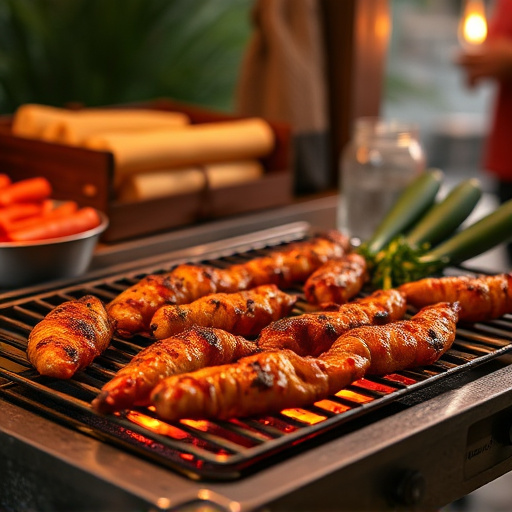To craft perfect smoky BBQ beef burnt ends, start with high-quality USDA Choice or Prime brisket, properly brine for 24-48 hours, and dry rub with a blend of spices. Smoke at 225°F-250°F using wood like oak, hickory, or mesquite until internal temp reaches 195°F. Sear on a hot grill to achieve caramelized edges, then slow cook until tender. Serve with crispy potatoes, coleslaw, barbecue sauce, and hearty bread for an exceptional BBQ experience. Store cooled meat in airtight containers up to 3-4 days or freeze for longer, reheating in the oven or on the stovetop at 350°F (175°C). Avoid overcooking by using indirect heat and allowing generous seasoning to penetrate the meat.
“Indulge your taste buds with the mouthwatering delight of Smoky Beef Burnt Ends with Caramelized Edges – a classic BBQ beef recipe that’s perfect for any gathering. This comprehensive guide takes you on a culinary journey, from selecting the juiciest cuts to mastering the art of smoking and grilling. Learn the secrets to achieving that perfectly charred exterior and tender, flavorful interior. With detailed step-by-step instructions, serving suggestions, storage tips, and more, you’ll become a BBQ master in no time.”
- Ingredient Selection for Smoky Beef Burnt Ends
- The Art of Brining: Preparing the Meat
- Smoking Technique for Optimal Flavor
- Mastering the Grill: Achieving Caramelized Edges
- Step-by-Step Cooking Instructions
- Serving Suggestions and Side Dishes
- Tips for Storage and Reheating
- Common Mistakes to Avoid
Ingredient Selection for Smoky Beef Burnt Ends
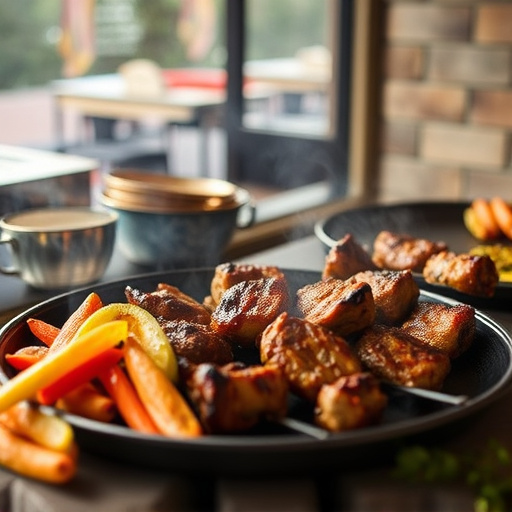
When crafting smoky beef burnt ends, the first step lies in selecting the right cut of meat for your BBQ beef recipe. Opt for a good quality, well-marbled beef brisket as it’s ideal for slow cooking and achieving that delectable caramelized exterior with smoky undertones. Look for a piece with even fat distribution; this ensures both flavor penetration during smoking and moist, tender results.
For the best BBQ beef recipe outcomes, choose a grade of meat between USDA Choice and Prime. The higher fat content in these cuts contributes to the meat’s ability to retain moisture when cooked low and slow, resulting in those coveted burnt ends with a crispy, caramelized edge. Remember, patience is key; allowing the beef to come up to room temperature before smoking ensures even cooking.
The Art of Brining: Preparing the Meat
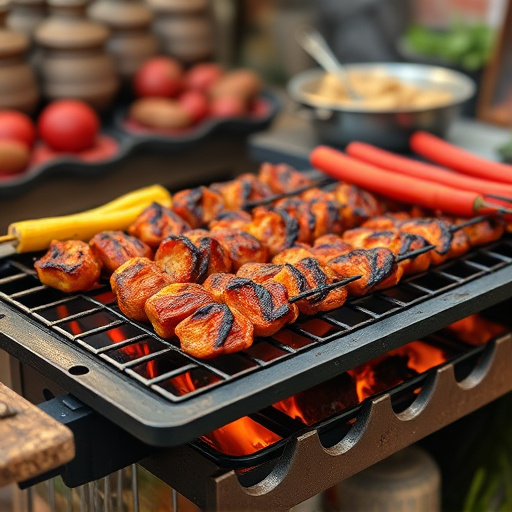
The art of brining is a crucial step in preparing the perfect BBQ beef burnt ends. It begins by submerging the meat in a solution of salt, sugar, and various spices, allowing it to absorb flavors for several hours or even days. This process not only enhances the taste but also helps break down some of the muscle fibers, making the beef incredibly tender when cooked. The right brine can turn ordinary beef into a mouthwatering BBQ delight.
For a stellar BBQ beef recipe, start by selecting a good quality cut of beef chuck, suitable for slow-roasting or braising. After brining, dry the meat thoroughly and sear it over high heat to develop those desirable caramelized edges. The combination of brining and searing results in succulent, smoky burnt ends that are sure to impress any BBQ enthusiast.
Smoking Technique for Optimal Flavor
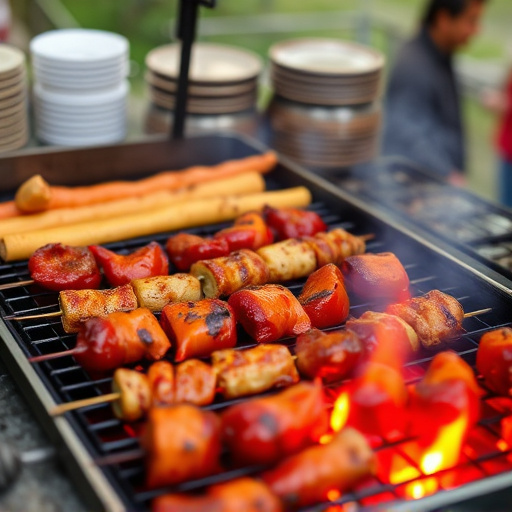
Smoking is a key technique in enhancing the flavor of BBQ beef recipes, particularly for dishes like smoky beef burnt ends with caramelized edges. The process involves slowly cooking meat at low temperatures over a combination of heat sources, typically wood chips or chunks, to infuse it with a rich, smoky aroma and taste. Different types of wood—such as oak, hickory, or mesquite—offer unique flavor profiles, allowing you to tailor the taste to your preference.
For optimal results, maintain a consistent low temperature between 225°F to 250°F (107°C to 121°C). This slow cooking allows the collagen in the meat to break down, resulting in tender, succulent beef. The smoke gently carves through the layers, adding complexity and depth of flavor. Regularly basting with a simple glaze made from brown sugar, vinegar, or rub spices can help caramelize the exterior while keeping the interior moist, creating those desirable burnt end flavors and textures.
Mastering the Grill: Achieving Caramelized Edges
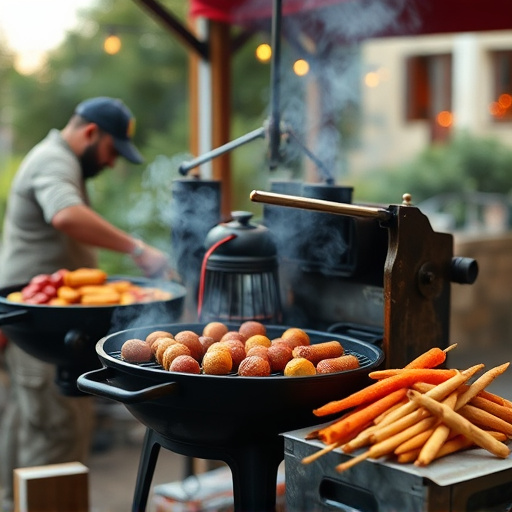
Mastering the art of grilling is key to achieving those coveted caramelized edges on your BBQ beef recipe. The secret lies in high heat and precise control. Preheat your grill to a intense, direct flame, allowing it to reach a scorching temperature. Place the beef ends on the grill, ensuring they’re not crowded, and cook for several minutes until nicely charred on one side. Then, with a quick turn, flip them over to create a contrast of colors and textures – a golden-brown exterior meets tender, smoky meat within. Keep a close eye as you continue cooking, adjusting the heat as needed to prevent burning and ensure even searing.
The magic happens during this critical stage, where sugars in the meat caramelize, infusing it with a deep, rich flavor. The high heat speeds up the cooking process, sealing in the juices and resulting in a mouthwatering texture that’s both crisp and tender. With a bit of practice and precision, you’ll be crafting BBQ beef burnt ends with perfectly caramelized edges that will have your taste buds dancing.
Step-by-Step Cooking Instructions
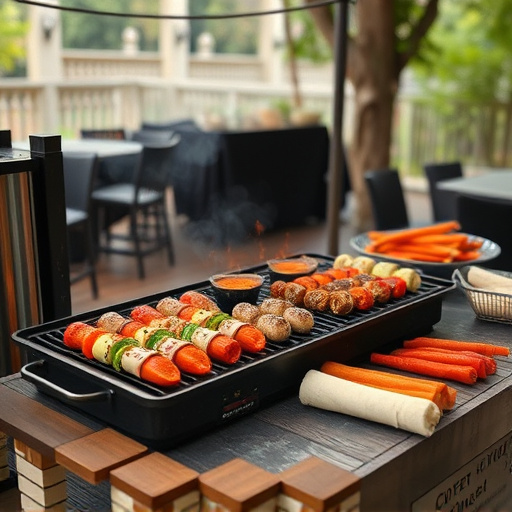
Step-by-Step Cooking Instructions for Smoky Beef Burnt Ends with Caramelized Edges
Start by preparing your favorite BBQ rub or use a store-bought blend. Rub this generously over the beef ends, ensuring every surface is coated. This step infuses flavor that will permeate the meat during cooking. Next, fire up your grill to high heat, aiming for a temperature of around 450°F (230°C). Place the beef ends on the grill and sear them for about 5-7 minutes per side until they develop a beautiful charred crust. This initial searing step adds depth of flavor and creates a delicious contrast.
After searing, reduce the heat to medium-low and continue cooking slowly, turning occasionally. The goal here is to achieve a internal temperature of 195°F (90°C) for medium-rare doneness. This slow-cooking process allows the caramelization to happen on the exterior while keeping the interior tender and juicy. Once the desired temperature is reached, remove the beef ends from the grill and let them rest for at least 20 minutes before slicing against the grain for maximum tenderness. Enjoy your perfectly cooked BBQ beef burnt ends with caramelized edges!
Serving Suggestions and Side Dishes
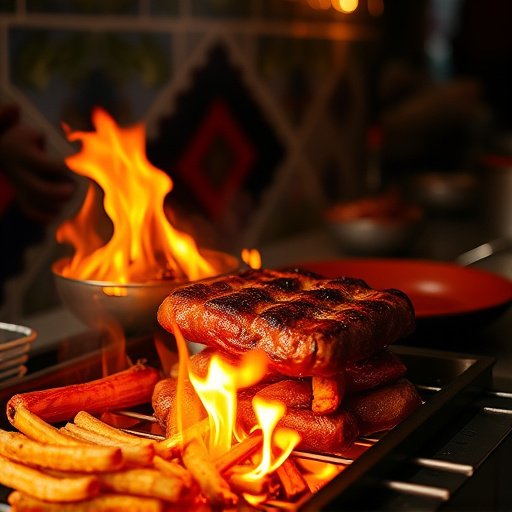
When serving this mouthwatering BBQ beef recipe, smoky and tender burnt ends are best showcased with a simple yet delicious setup. Pair the caramelized edges with a side of crispy roasted potatoes or fresh coleslaw for a balance of textures and flavors. The rich, smoky taste of the beef pairs exceptionally well with sweet and tangy barbecue sauces, so don’t hesitate to include some on the table for guests to customize their plates. For a complete meal, consider adding a hearty bread selection to soak up any remaining juices, providing both sustenance and satisfaction.
Tips for Storage and Reheating
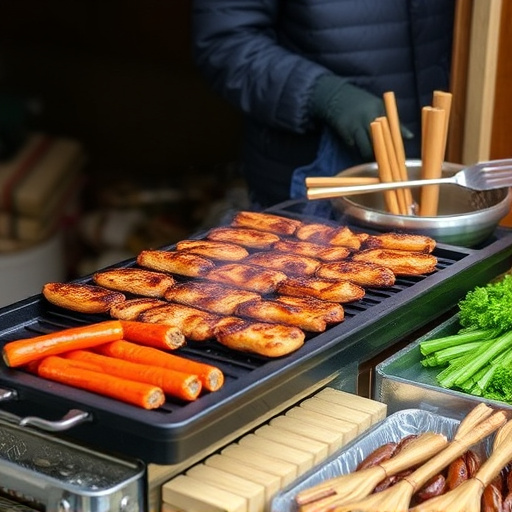
Tips for Storage and Reheating
After preparing your smoky beef burnt ends with caramelized edges, proper storage is key to maintaining their delicious flavor and texture. Allow the meat to cool down completely before storing it in an airtight container in the refrigerator. This can last for up to 3-4 days. For longer-term storage, wrap the cooled beef tightly in foil or plastic wrap, then transfer it to a freezer-safe bag and freeze for up to 2 months.
When ready to reheat, avoid overcooking by warming the beef in a preheated oven at 350°F (175°C) for about 15-20 minutes or until heated through. Alternatively, you can quickly warm them on the stovetop in a skillet with a little bit of oil, ensuring they retain their juicy, caramelized goodness. For a truly delicious experience, consider reheating them in a barbecue with low heat to infuse that classic BBQ flavor back into your beef burnt ends.
Common Mistakes to Avoid
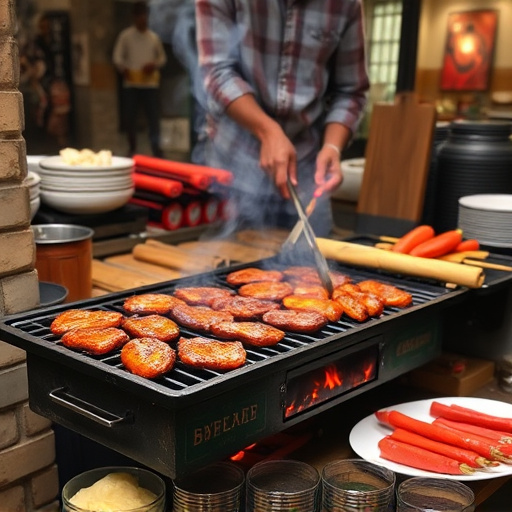
When preparing smoky beef burnt ends with caramelized edges, there are a few common mistakes to avoid that can keep your dish from reaching its full potential. One frequent error is overcooking the beef, which can result in tough, leathery slices. To prevent this, focus on slow-roasting the meat at a low temperature and using indirect heat to ensure even cooking. Direct high heat will only char the exterior without fully cooking the interior.
Another mistake to steer clear of is failing to properly season the beef. A balanced blend of spices and marinades is key for a flavorful BBQ beef recipe. Don’t be timid with your seasonings; allow them to penetrate the meat by marinating for several hours or even overnight before cooking. Additionally, don’t forget the power of simple ingredients like salt, pepper, and garlic, which can elevate your burnt ends from ordinary to extraordinary.
